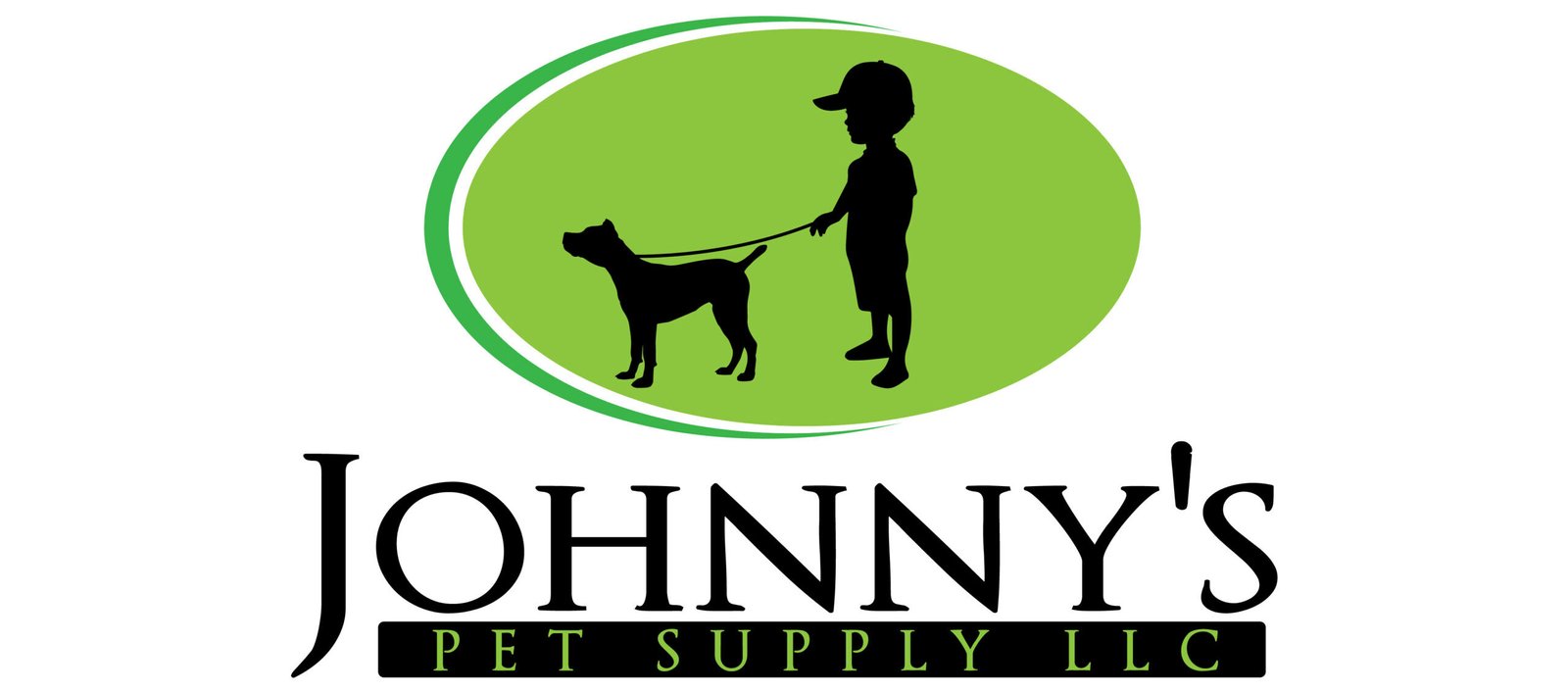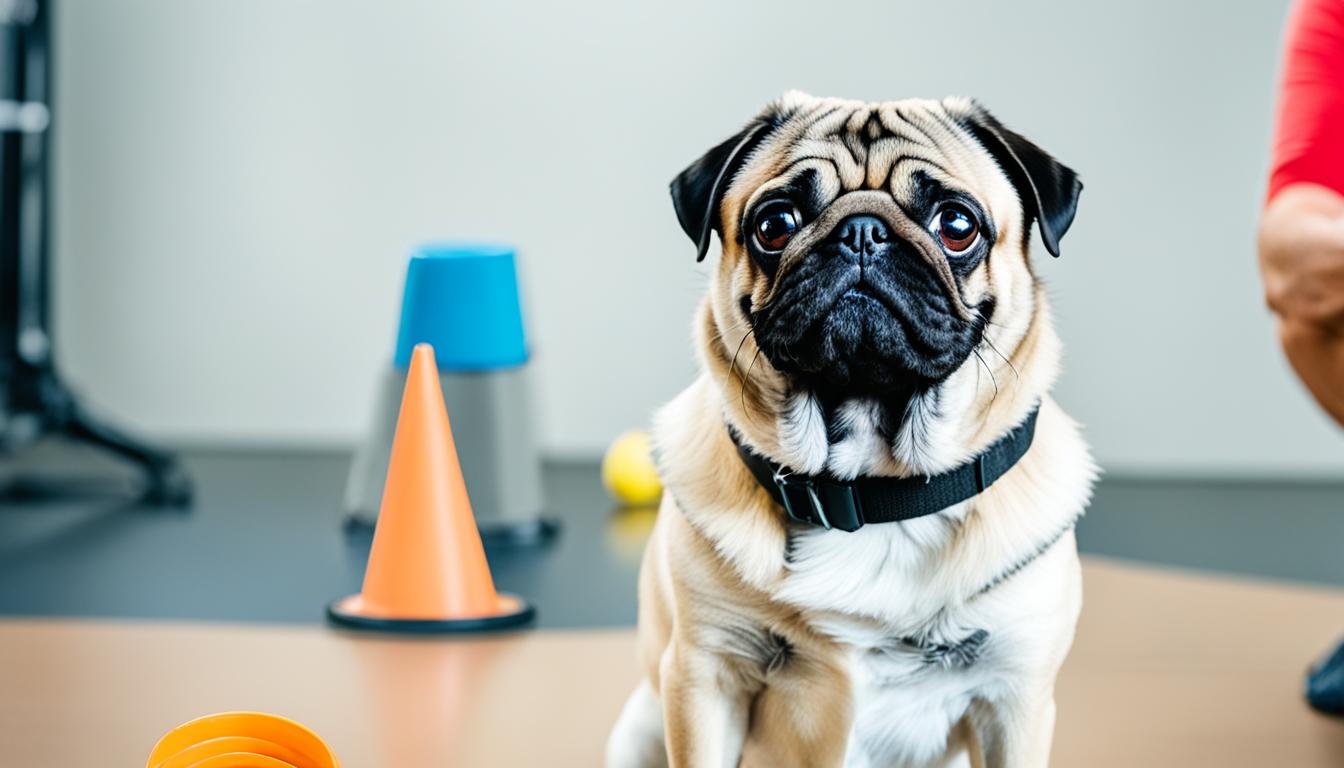How to avoid behavioral problems in Pugs
As a Pug owner, I know how crucial it is to tackle behavioral issues early on. Pugs are known for being friendly and easy-going. Yet, they can still face behavioral challenges that need our attention and action. This article will cover ways to stop and handle these problems in Pugs. We’ll focus on positive reinforcement, socializing your Pug, and dealing with behaviors like barking, begging, and chewing.
Knowing how Pugs act and using the right training can make for a happy and obedient pet. This guide is for both new and seasoned Pug owners. It aims to help you prevent and fix behavioral issues in your Pug.
Understanding Common Pug Behaviors
Pugs are loved for their sweet and playful nature. But, they also have behaviors that need understanding and training. Let’s look at some common Pug behaviors and how to handle them.
Barking Tendencies
Pugs bark a lot, often to show they’re feeling territorial or want attention. To stop Pug barking tendencies, teach them the “Quiet” command. This way, you can control their barking and reward them for listening.
Begging for Food
Pug begging behavior is common because they love food so much. To stop Pug food obsession, feed them in their own bowl. Don’t give in to their begging to avoid making it worse.
Chewing Habits
Chewing is natural for dogs, and Pug chewing habits are no different. Give them chew toys and stop them from chewing on things at home. Training them to bark on command can also help them chew on the right things.
Understanding and dealing with these behaviors makes for a happy and well-behaved Pug. With patience, consistency, and positive rewards, your Pug can become a loving and well-adjusted part of the family.
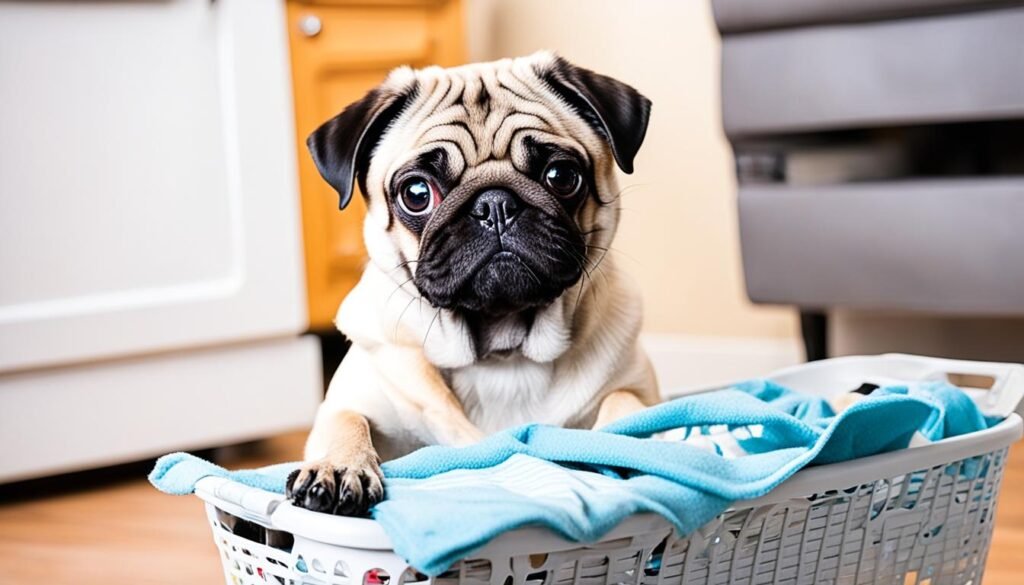
Housetraining Challenges for Pugs
Housetraining Pugs can be different from training bigger dogs. As small dogs, Pugs need a special way to learn. Crate training Pugs works well and can take a few weeks. It helps them keep their area clean.
For city Pug owners, indoor housetraining might be needed. But, it has its own challenges. It’s important to train your Pug well and give them places to go outside.
Using praise and rewards is key in Housetraining Pugs. When your Pug goes in the right spot, praise and reward them. With patience and the right approach, you can make your Pug well-trained and polite.
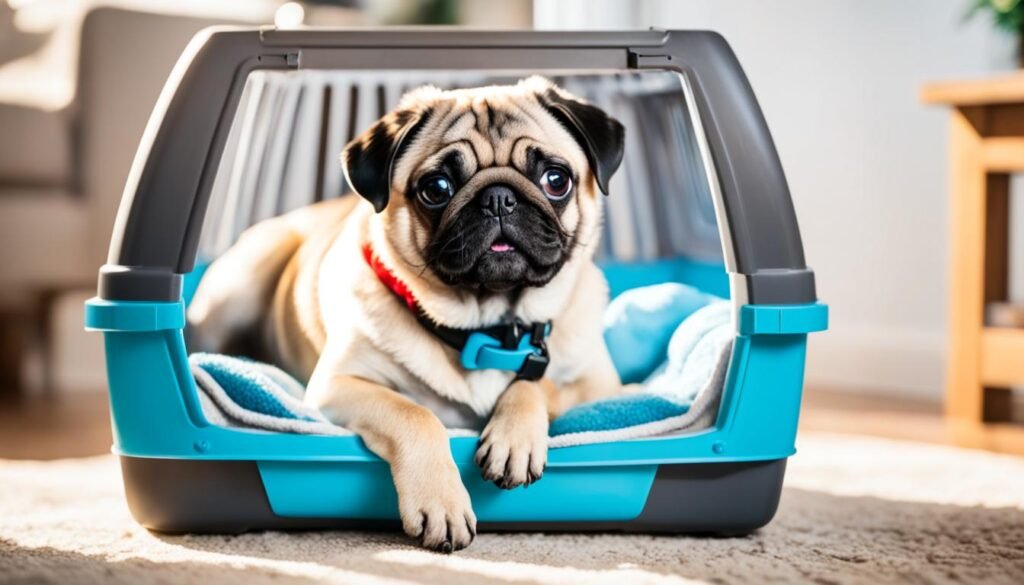
Addressing Separation Anxiety in Pugs
Pugs love being close to their owners, which can lead to separation anxiety when left alone. As a pug owner, it’s crucial to tackle this issue to keep your pet happy and safe from harm.
Preventing Negative Associations
To fight pug separation anxiety, avoid making your leaving a big deal. Give your pug a special treat or toy before you go. This keeps them busy and happy. When you come back, take the treat or toy away to stop them from linking your leaving with a reward.
Building Independence
Help your pug become more independent with training and fun activities. Give them chew toys, puzzle feeders, or interactive toys to play with when you’re out. Gradually increase how long you’re away, rewarding your pug for staying calm when you return. This method can make your pug feel safe and confident when you’re not there.
How to avoid behavioral problems in Pugs
Pugs can show behaviors like too much barking, constant begging, and chewing things they shouldn’t. These behaviors might seem like part of their nature. But, Avoiding Pug behavioral issues and Preventing Pug behavior problems is really about how we interact with them.
Understanding why Pugs act out is key to fixing it. They are smart, lively dogs that need to stay busy and be trained well. If they don’t get what they need, they might bark, beg, or chew more. By finding out why they do these things and using positive training, we can change their behavior for the better.
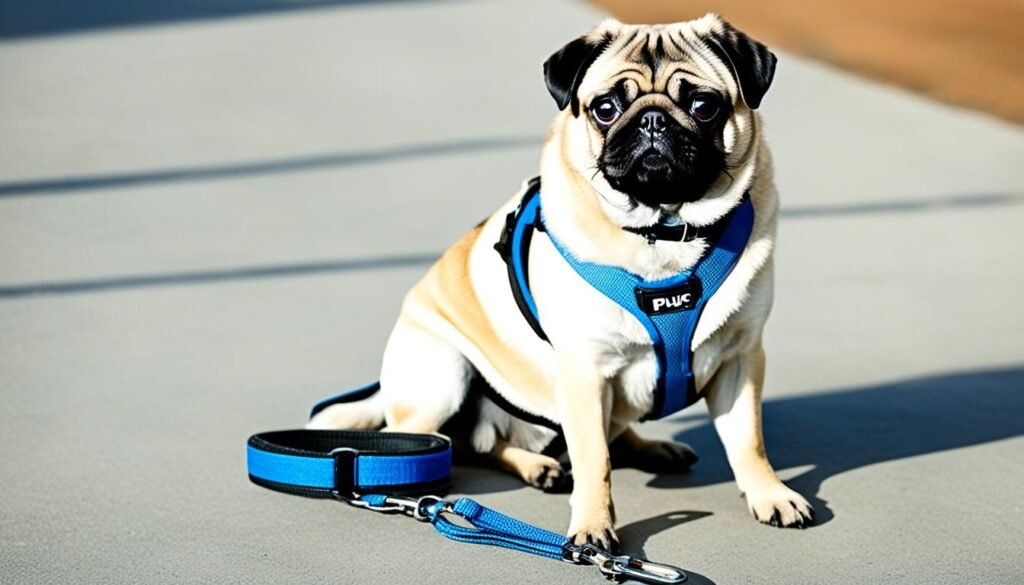
Pugs are very sensitive to their surroundings and our feelings. If we accidentally make bad behaviors worse or get upset, it can make things worse. We should work on Avoiding Pug behavioral issues by giving them a good routine, lots of exercise, and praise for good actions.
Knowing what our Pugs need and using Pug behavior modification techniques can help solve problems early. This way, we can have a happy, well-behaved Pug and stop Pug behavior problems before they start. With time, patience, and a positive attitude, our Pugs can stay the sweet, loving dogs we adore.
Positive Reinforcement for Pug Training
Positive reinforcement is a great way to train Pugs because they love food. By giving them small, tasty treats for good behavior, you can teach them and strengthen your bond. Adding praise and affection makes the training fun for both you and your Pug.
Using Treats Effectively
For Positive reinforcement training for Pugs, choose Effective Pug training treats they can’t resist. Use small pieces of cheese, cooked chicken, or special training treats. They’re easy to give out and won’t make your Pug too full. Remember to give the treat right after they do the good behavior to link the action with the reward.
Pug praise and reward systems
It’s important to have a regular praise and reward system for Positive reinforcement training for Pugs. When your Pug does something you’ve been teaching them, like sitting or coming when called, praise them and give a treat. This tells them they’re doing great and will keep doing it. Over time, this method can change your Pug’s behavior and make your bond stronger.
Socializing and Bonding with Your Pug
Pugs are friendly and loving, making them great for families with kids. Socializing Pugs early and giving them positive feedback is key. This helps them get used to being around kids and other family members.
Bonding with Pugs is rewarding because they love attention and play. Spend time each day playing, cuddling, and grooming your Pug. This strengthens your bond and prevents issues like separation anxiety.
Introducing Children and New Pets
When Introducing Pugs to children, watch them closely and teach them how to be gentle. Make sure they play nicely together. Doing this helps everyone get along.
When Introducing Pugs to new pets, go slow. Let them meet each other on their own terms. Make sure they have their own spaces for eating and resting. With time and kindness, your Pug will get along with everyone.
Managing Pug Energy Levels
As a Pug owner, I’ve learned how much energy these little dogs have. Their playful nature is charming, but it’s key to use their energy well to avoid bad habits. To manage their energy, it’s important to give them enough exercise and mental challenges every day.
It’s vital to exercise Pugs regularly to keep them healthy and obedient. Daily walks, playing with toys, and light training help use up their energy. Offering different activities like fetch, tug-of-war, and puzzle toys keeps their minds sharp and stops them from getting bored and misbehaving.
Stopping Pug hyperactivity is key to managing their energy. By fulfilling their physical and mental needs, Pugs tend to behave better. A steady routine and plenty of exercise and fun activities help keep a Pug happy and well-balanced.
